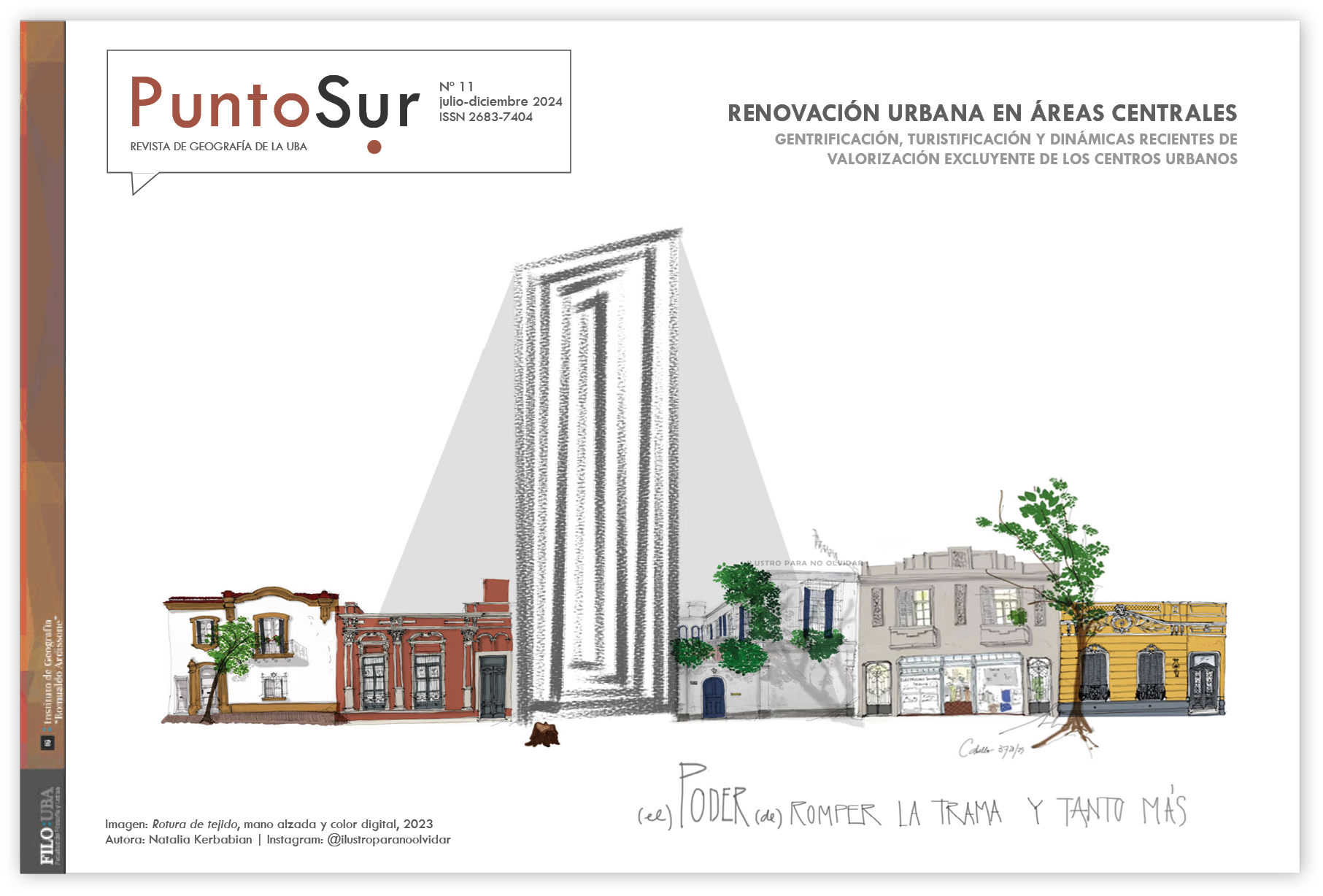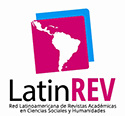The shadows of the night
Clandestinization of urban informality in geographies of the pleasure of Southern Europe
Keywords:
night, pleasure, migration, geography, informality, Southern Europe
Abstract
Public discourse around the night has been plagued by ambiguities, contradictions and double standards for several decades in Southern European cities: either described as a place of pleasure or dark threats and dangers; a place of economic and tourist growth or a place where ‘informality’, the ‘black market’ and underground activities take place. Alongside this, the emergence of migrant, often racialised, people exercising survival activities at night in these unequal economies of pleasure, has unleashed all the levers of contemporary demonisation against urban subalternity. With a particular focus on Madrid (Spain) and Rome (Italy), and through an exhaustive analysis of secondary sources, interviews with key actors, and participant observation, in this paper I explore the contradictions inherent to the geographies of pleasure in these territories. First, how public narratives of ‘blackness’ - underpinned by historical imaginaries of an alienated and racialised otherness - that appeal to a ‘white morality’ are used to make certain informal actors more clandestine (e.g. sex workers, street vendors) and drive them ‘into the shadows’ of urban space. Secondly, how the clandestinisation - followed by increased precariousness and psychological, physical and labour abuse - of these actors is operative to the neoliberal governance of South European geographies of pleasure (a public space cleansed of dark bodies) and to circuits of neoliberal accumulation.Downloads
References
BIBLIOGRAFÍA
Agustín, L. M. (2008). Sex at the margins: Migration, labour markets and the rescue industry. Bloomsbury Publishing. https://doi.org/10.5040/9781350222496
Antaki, C., Billig, M., Potter, J., & Edwards, D. (2003). El Análisis del discurso implica analizar: Crítica de seis atajos analíticos. Athenea digital. Revista de pensamiento e investigación social, 1(3), 14–35. https://doi.org/10.5565/rev/athenead/v1n3.64
Anderson, B., & Andrijasevic, R. (2008). Sex, slaves and citizens: The politics of anti-trafficking. Soundings, 2008(40), 135-145. https://doi.org/10.3898/136266208820465065
Antena 3 (4/10/2023). 'Pateras taxi', la nueva modalidad de la mafia para traer inmigrantes ilegales a las costas de Cádiz con lanchas de narcos. Acceso en: https://www.antena3.com/noticias/sociedad/pateras-taxi-nueva-modalidad-mafia-traer-inmigrantes-ilegales-costas-cadiz-lanchas-narcos_20231004651d7900b2ab570001f84d86.html
Aramayona, B. (2019). Ciudad (in)civilizada: marginalidad urbana, ecología del miedo y populismo punitivo en la ciudad de Madrid: los casos de El Rastro (Centro) y San Diego (Puente de Vallecas). Tesis doctoral publicada en la Universidad Autónoma de Madrid. https://repositorio.uam.es/handle/10486/689192
Aramayona, B. y García-Sánchez, R. (2019) Decoding middle-class protest against low-cost nocturnal tourism in Madrid. Journal of Policy Research in Tourism, Leisure and Events 11.3, 380-393. https://doi.org/10.1080/19407963.2019.1584627
Aramayona, B., López-Herce, J. R., Gómez-Ullate, J., Licht, D. F., Gómez, M. S., & Nofre, J. (2021). Geografías de la ciudad nocturna: análisis comparativo y aplicado del ocio nocturno joven en Madrid, Barcelona y Lisboa. Madrid: Centro Reina Sofía. https://www.centroreinasofia.org/publicacion/geografias-ocio-nocturno/
Aramayona, B. (2023). La invisibilización de la informalidad en la ciudad nocturna: el desplazamiento de trabajadoras sexuales y domésticas hacia espacios privados. Forum Sociológico. Série II (No. 43). CESNOVA. https://doi.org/10.4000/sociologico.11969
Aramayona, B. y Guarneros-Meza, V. (2023) The 'In/formal Nocturnal City': updating a research agenda on nightlife studies from a Southern European perspective. Urban Studies 1-15. https://doi.org/10.1177/00420980231188512
Bolzoni, M. (2016). Spaces of distinction, spaces of segregation. Nightlife and consumption in a central neighbourhood of Turin. Méditerranée. Revue géographique des pays méditerranéens/Journal of Mediterranean geography, (127), 59-68. https://doi.org/10.4000/mediterranee.8425
Chiodelli, F. (2021). Moving beyond informality-of-need and informality-of-desire: Insights from a southern (European) perspective. Planning Theory, 20(4), 390-394. https://doi.org/10.1177/14730952211032026
Dunn, N., & Edensor, T. (Eds.). (2020). Rethinking Darkness: Cultures, Histories, Practices. Routledge. https://doi.org/10.4324/9780429259654
Edensor, T. (2015a). Introduction to geographies of darkness. cultural geographies, 22(4), 559-565. https://doi.org/10.1177/1474474015604807
Edensor, T. (2015b). The gloomy city: Rethinking the relationship between light and dark. Urban studies, 52(3), 422-438. https://doi.org/10.1177/0042098013504009
Essed, P., Farquharson, K., Pillay, K., & White, E. J. (2019). Relating Worlds of Racism. Dehumanisation, Belonging, and the Normativity of European Whiteness, Cham. Palgrave-MacMillan. https://doi.org/10.1007/978-3-319-78990-3
Hadfield, P. (2015). The night-time city. Four modes of exclusion: Reflections on the Urban Studies special collection. Urban Studies, 52(3), 606-616. https://doi.org/10.1177/0042098014552934
Hae, L. (2011). Gentrification and politicization of nightlife in New York City. ACME: An International Journal for Critical Geographies, 10(3), 564-584. https://acme-journal.org/index.php/acme/article/view/911
Hubbard, P., & Sanders, T. (2003). Making space for sex work: Female street prostitution and the production of urban space. International Journal of Urban and regional research, 27(1), 75-89. https://doi.org/10.1111/1468-2427.00432
Hubbard, P., Matthews, R., & Scoular, J. (2008). Regulating sex work in the EU: prostitute women and the new spaces of exclusion. Gender, Place & Culture, 15(2), 137-152. https://doi.org/10.1080/09663690701863232
Hubbard, P. (2013). Cleansing the metropolis: sex work and the politics of zero tolerance. In Cities of Pleasure (pp. 57-72). Routledge. https://doi.org/10.4324/9781315879147-9
Iñiguez, L. (2003). Análisis del discurso. Manual para las ciencias sociales. Barcelona: UOC. https://doi.org/10.5565/rev/athenead/v1n5.134
Kolioulis, A. (2018). More day in the night? The gentrification of London’s night-time through clubbing. Bollettino della Società Geografica Italiana, 14(1), 2. https://doi.org/10.13128/bsgi.v1i2.536.
La Voz Digital (4/10/2023). Las 'pateras taxi' llegan a la costa de Cádiz, las mafias no descansan. Escrito por M. Almagro. Acceso en: https://www.lavozdigital.es/provincia/pateras-taxi-llegan-costa-cadiz-mafias-descansan-20231003072805-ntv.html
Malet-Calvo, D., Nofre, J., & Geraldes, M. (2017). The Erasmus Corner: place-making of a sanitised nightlife spot in the Bairro Alto (Lisbon, Portugal). Leisure Studies, 36(6), 778-792. https://doi.org/10.1080/02614367.2016.1271821
Motterle, L. (2016). Som un barri digne! Etnografia d'una prostitució indignada com fenomen de resistència urbana al Raval. Revista d'etnologia de Catalunya, (41), 239-242. https://raco.cat/index.php/RevistaEtnologia/article/view/306739
Nofre, J. (2013). " Vintage Nightlife": Gentrifying Lisbon downtown. Fennia-International Journal of Geography, 191(2), 106-121. https://doi.org/10.11143/8231
Nofre, J., Giordano, E., Eldridge, A., Martins, J. C., & Sequera, J. (2018). Tourism, nightlife and planning: challenges and opportunities for community liveability in La Barceloneta. Tourism Geographies, 20(3), 377-396. https://doi.org/10.1080/14616688.2017.1375972
Nofre, J., Martins, J. C., Vaz, D., Fina, R., Sequera, J., & Vale, P. (2019). The ‘Pink Street’in Cais do Sodré: urban change and liminal governance in a nightlife district of Lisbon. Urban Research & Practice, 12(4), 322-340. https://doi.org/10.1080/17535069.2018.1449010
Nofre, J. (2021). The touristification of nightlife: some theoretical notes. Urban Geography, 42(10), 1552-1561. https://doi.org/10.1080/02723638.2020.1855002
Olcuire, S. (2023). Indecorose. Sex work e resistenza al governo dello spazio pubblico nella città di Roma. ETNOGRAFIE, 1-242.
OXFAM. (Ed.) (2021). Esenciales y sin derechos: o cómo implementar el convenio 189 de la OIT para las trabajadoras del hogar. https://www.oxfamintermon.org/es/publicacion/esenciales-sin-derechos-empleadas-hogar
Queirolo-Palma, L. y Rahola, F. (2020). Underground Europe. Along migrant routes. Palgrave Macmillan. https://doi.org/10.1007/978-3-031-16151-3
Relator de Naciones Unidas (2020). Relator de la ONU: "La situación de los recolectores de la fresa en Huelva es peor que en un campo de refugiados". En Europa Press (7 Febrero 2020). Acceso en: https://www.europapress.es/epsocial/derechos-humanos/noticia-relator-onu-situacion-recolectores-fresa-huelva-peor-campo-refugiados-20200207182726.html
Roy, A., & AlSayyad, N. (Eds.). (2004). Urban informality: Transnational perspectives from the middle East, latin America, and south Asia. Lexington Books. https://doi.org/10.1111/j.1949-3606.2005.tb00914.x
Sánchez-Perera, P. (2023). Crítica de la razón puta. Cartografías del estigma de la prostitución. La Oveja Roja.
Seal, L. (Ed.) (2022). Sex work and the nighttime economy. In Gender, crime and justice (pp. 93-123). Palgrave Macmillan. https://doi.org/10.1007/978-3-030-87488-9_4
Shaw, S., & Sullivan, D. M. (2011). “White night”: Gentrification, racial exclusion, and perceptions and participation in the arts. City & Community, 10(3), 241-264. https://doi.org/10.1111/j.1540-6040.2011.01373.x
Suárez-Navaz, L. (2004). Rebordering the Mediterranean: boundaries and citizenship in Southern Europe (Vol. 17). Berghahn books. https://doi.org/10.1515/9781782381907
Villacampa, C. y Torres, N. (2013) Políticas criminilizadoras de la prostitución en España. Efectos sobre las trabajadoras sexuales, Revista electrónica de Ciencia Penal y Criminología, 15(6), 1-40. https://repositori.udl.cat/server/api/core/bitstreams/650ae4eb-6bdc-47dd-bdb8-55cc9500a9a1/content
Agustín, L. M. (2008). Sex at the margins: Migration, labour markets and the rescue industry. Bloomsbury Publishing. https://doi.org/10.5040/9781350222496
Antaki, C., Billig, M., Potter, J., & Edwards, D. (2003). El Análisis del discurso implica analizar: Crítica de seis atajos analíticos. Athenea digital. Revista de pensamiento e investigación social, 1(3), 14–35. https://doi.org/10.5565/rev/athenead/v1n3.64
Anderson, B., & Andrijasevic, R. (2008). Sex, slaves and citizens: The politics of anti-trafficking. Soundings, 2008(40), 135-145. https://doi.org/10.3898/136266208820465065
Antena 3 (4/10/2023). 'Pateras taxi', la nueva modalidad de la mafia para traer inmigrantes ilegales a las costas de Cádiz con lanchas de narcos. Acceso en: https://www.antena3.com/noticias/sociedad/pateras-taxi-nueva-modalidad-mafia-traer-inmigrantes-ilegales-costas-cadiz-lanchas-narcos_20231004651d7900b2ab570001f84d86.html
Aramayona, B. (2019). Ciudad (in)civilizada: marginalidad urbana, ecología del miedo y populismo punitivo en la ciudad de Madrid: los casos de El Rastro (Centro) y San Diego (Puente de Vallecas). Tesis doctoral publicada en la Universidad Autónoma de Madrid. https://repositorio.uam.es/handle/10486/689192
Aramayona, B. y García-Sánchez, R. (2019) Decoding middle-class protest against low-cost nocturnal tourism in Madrid. Journal of Policy Research in Tourism, Leisure and Events 11.3, 380-393. https://doi.org/10.1080/19407963.2019.1584627
Aramayona, B., López-Herce, J. R., Gómez-Ullate, J., Licht, D. F., Gómez, M. S., & Nofre, J. (2021). Geografías de la ciudad nocturna: análisis comparativo y aplicado del ocio nocturno joven en Madrid, Barcelona y Lisboa. Madrid: Centro Reina Sofía. https://www.centroreinasofia.org/publicacion/geografias-ocio-nocturno/
Aramayona, B. (2023). La invisibilización de la informalidad en la ciudad nocturna: el desplazamiento de trabajadoras sexuales y domésticas hacia espacios privados. Forum Sociológico. Série II (No. 43). CESNOVA. https://doi.org/10.4000/sociologico.11969
Aramayona, B. y Guarneros-Meza, V. (2023) The 'In/formal Nocturnal City': updating a research agenda on nightlife studies from a Southern European perspective. Urban Studies 1-15. https://doi.org/10.1177/00420980231188512
Bolzoni, M. (2016). Spaces of distinction, spaces of segregation. Nightlife and consumption in a central neighbourhood of Turin. Méditerranée. Revue géographique des pays méditerranéens/Journal of Mediterranean geography, (127), 59-68. https://doi.org/10.4000/mediterranee.8425
Chiodelli, F. (2021). Moving beyond informality-of-need and informality-of-desire: Insights from a southern (European) perspective. Planning Theory, 20(4), 390-394. https://doi.org/10.1177/14730952211032026
Dunn, N., & Edensor, T. (Eds.). (2020). Rethinking Darkness: Cultures, Histories, Practices. Routledge. https://doi.org/10.4324/9780429259654
Edensor, T. (2015a). Introduction to geographies of darkness. cultural geographies, 22(4), 559-565. https://doi.org/10.1177/1474474015604807
Edensor, T. (2015b). The gloomy city: Rethinking the relationship between light and dark. Urban studies, 52(3), 422-438. https://doi.org/10.1177/0042098013504009
Essed, P., Farquharson, K., Pillay, K., & White, E. J. (2019). Relating Worlds of Racism. Dehumanisation, Belonging, and the Normativity of European Whiteness, Cham. Palgrave-MacMillan. https://doi.org/10.1007/978-3-319-78990-3
Hadfield, P. (2015). The night-time city. Four modes of exclusion: Reflections on the Urban Studies special collection. Urban Studies, 52(3), 606-616. https://doi.org/10.1177/0042098014552934
Hae, L. (2011). Gentrification and politicization of nightlife in New York City. ACME: An International Journal for Critical Geographies, 10(3), 564-584. https://acme-journal.org/index.php/acme/article/view/911
Hubbard, P., & Sanders, T. (2003). Making space for sex work: Female street prostitution and the production of urban space. International Journal of Urban and regional research, 27(1), 75-89. https://doi.org/10.1111/1468-2427.00432
Hubbard, P., Matthews, R., & Scoular, J. (2008). Regulating sex work in the EU: prostitute women and the new spaces of exclusion. Gender, Place & Culture, 15(2), 137-152. https://doi.org/10.1080/09663690701863232
Hubbard, P. (2013). Cleansing the metropolis: sex work and the politics of zero tolerance. In Cities of Pleasure (pp. 57-72). Routledge. https://doi.org/10.4324/9781315879147-9
Iñiguez, L. (2003). Análisis del discurso. Manual para las ciencias sociales. Barcelona: UOC. https://doi.org/10.5565/rev/athenead/v1n5.134
Kolioulis, A. (2018). More day in the night? The gentrification of London’s night-time through clubbing. Bollettino della Società Geografica Italiana, 14(1), 2. https://doi.org/10.13128/bsgi.v1i2.536.
La Voz Digital (4/10/2023). Las 'pateras taxi' llegan a la costa de Cádiz, las mafias no descansan. Escrito por M. Almagro. Acceso en: https://www.lavozdigital.es/provincia/pateras-taxi-llegan-costa-cadiz-mafias-descansan-20231003072805-ntv.html
Malet-Calvo, D., Nofre, J., & Geraldes, M. (2017). The Erasmus Corner: place-making of a sanitised nightlife spot in the Bairro Alto (Lisbon, Portugal). Leisure Studies, 36(6), 778-792. https://doi.org/10.1080/02614367.2016.1271821
Motterle, L. (2016). Som un barri digne! Etnografia d'una prostitució indignada com fenomen de resistència urbana al Raval. Revista d'etnologia de Catalunya, (41), 239-242. https://raco.cat/index.php/RevistaEtnologia/article/view/306739
Nofre, J. (2013). " Vintage Nightlife": Gentrifying Lisbon downtown. Fennia-International Journal of Geography, 191(2), 106-121. https://doi.org/10.11143/8231
Nofre, J., Giordano, E., Eldridge, A., Martins, J. C., & Sequera, J. (2018). Tourism, nightlife and planning: challenges and opportunities for community liveability in La Barceloneta. Tourism Geographies, 20(3), 377-396. https://doi.org/10.1080/14616688.2017.1375972
Nofre, J., Martins, J. C., Vaz, D., Fina, R., Sequera, J., & Vale, P. (2019). The ‘Pink Street’in Cais do Sodré: urban change and liminal governance in a nightlife district of Lisbon. Urban Research & Practice, 12(4), 322-340. https://doi.org/10.1080/17535069.2018.1449010
Nofre, J. (2021). The touristification of nightlife: some theoretical notes. Urban Geography, 42(10), 1552-1561. https://doi.org/10.1080/02723638.2020.1855002
Olcuire, S. (2023). Indecorose. Sex work e resistenza al governo dello spazio pubblico nella città di Roma. ETNOGRAFIE, 1-242.
OXFAM. (Ed.) (2021). Esenciales y sin derechos: o cómo implementar el convenio 189 de la OIT para las trabajadoras del hogar. https://www.oxfamintermon.org/es/publicacion/esenciales-sin-derechos-empleadas-hogar
Queirolo-Palma, L. y Rahola, F. (2020). Underground Europe. Along migrant routes. Palgrave Macmillan. https://doi.org/10.1007/978-3-031-16151-3
Relator de Naciones Unidas (2020). Relator de la ONU: "La situación de los recolectores de la fresa en Huelva es peor que en un campo de refugiados". En Europa Press (7 Febrero 2020). Acceso en: https://www.europapress.es/epsocial/derechos-humanos/noticia-relator-onu-situacion-recolectores-fresa-huelva-peor-campo-refugiados-20200207182726.html
Roy, A., & AlSayyad, N. (Eds.). (2004). Urban informality: Transnational perspectives from the middle East, latin America, and south Asia. Lexington Books. https://doi.org/10.1111/j.1949-3606.2005.tb00914.x
Sánchez-Perera, P. (2023). Crítica de la razón puta. Cartografías del estigma de la prostitución. La Oveja Roja.
Seal, L. (Ed.) (2022). Sex work and the nighttime economy. In Gender, crime and justice (pp. 93-123). Palgrave Macmillan. https://doi.org/10.1007/978-3-030-87488-9_4
Shaw, S., & Sullivan, D. M. (2011). “White night”: Gentrification, racial exclusion, and perceptions and participation in the arts. City & Community, 10(3), 241-264. https://doi.org/10.1111/j.1540-6040.2011.01373.x
Suárez-Navaz, L. (2004). Rebordering the Mediterranean: boundaries and citizenship in Southern Europe (Vol. 17). Berghahn books. https://doi.org/10.1515/9781782381907
Villacampa, C. y Torres, N. (2013) Políticas criminilizadoras de la prostitución en España. Efectos sobre las trabajadoras sexuales, Revista electrónica de Ciencia Penal y Criminología, 15(6), 1-40. https://repositori.udl.cat/server/api/core/bitstreams/650ae4eb-6bdc-47dd-bdb8-55cc9500a9a1/content
Published
2024-11-14
How to Cite
Aramayona, B. (2024). The shadows of the night. Punto Sur, (11), 138-156. https://doi.org/10.34096/ps.n11.14232
Section
Dossier
Copyright (c) 2024 Begoña Aramayona

This work is licensed under a Creative Commons Attribution 4.0 International License.






















